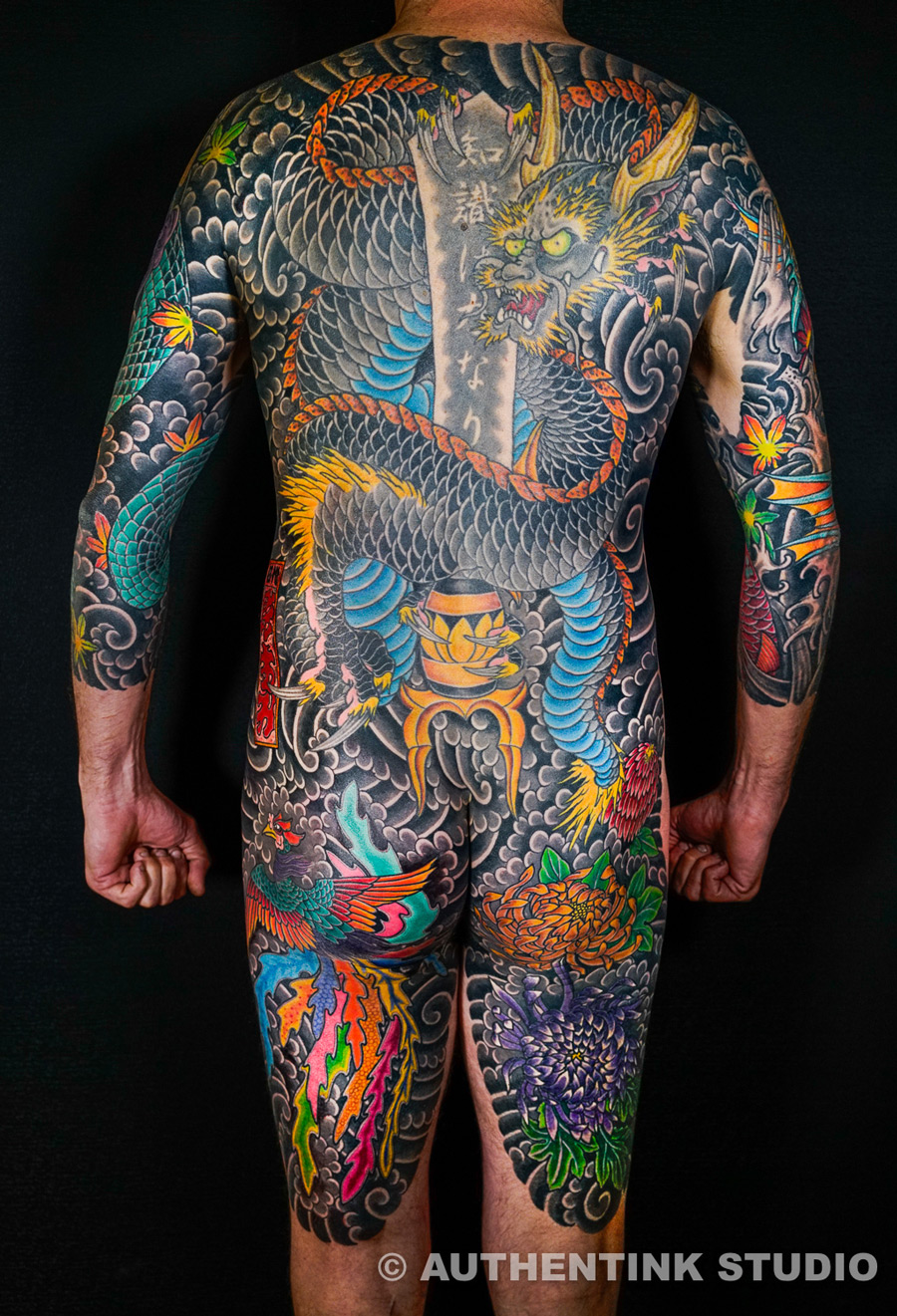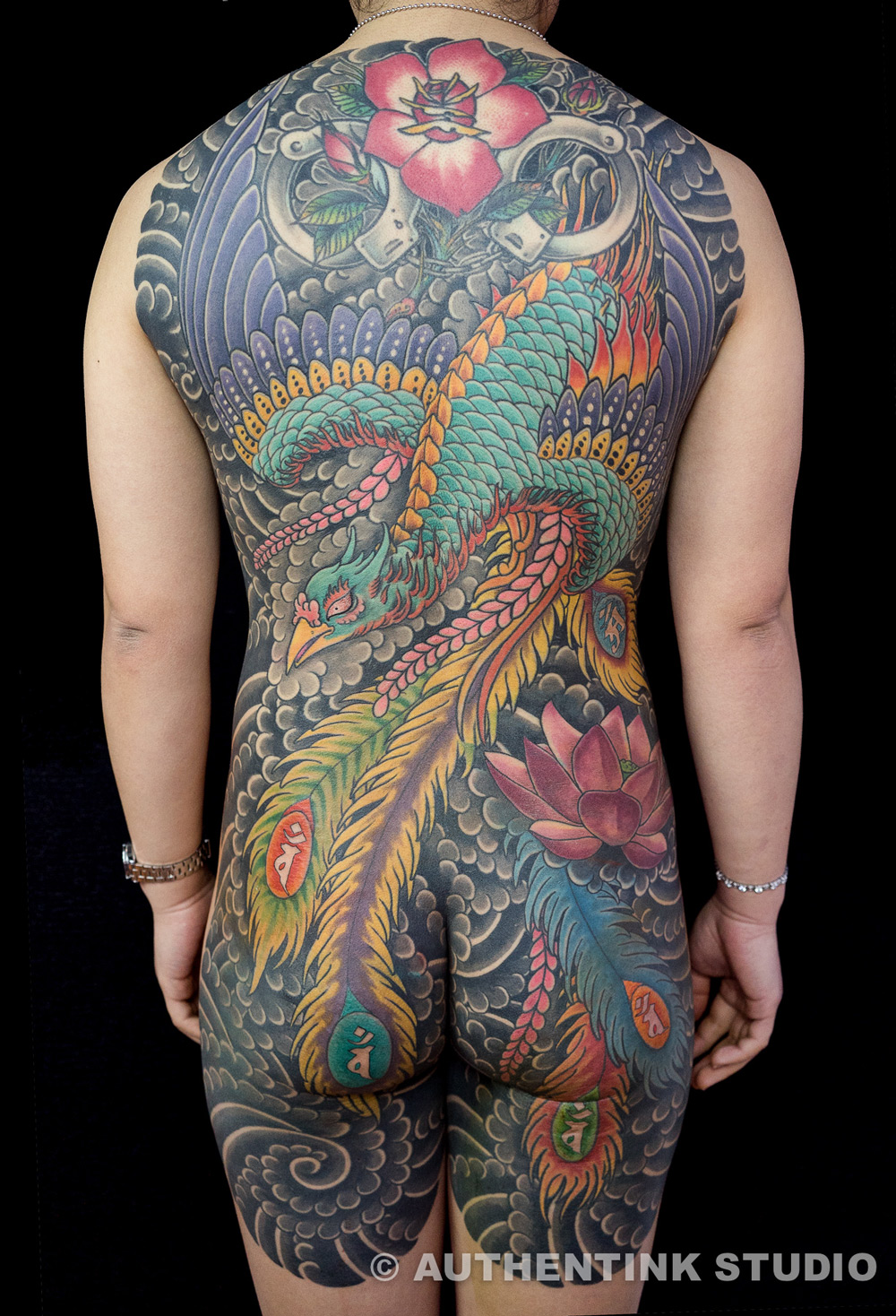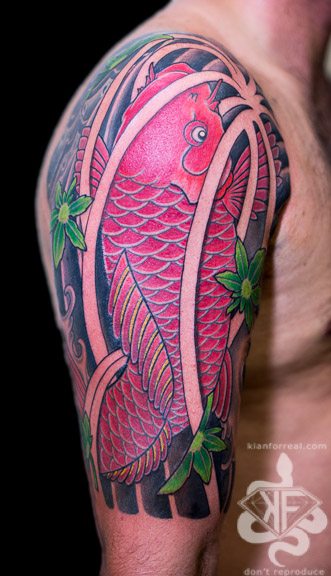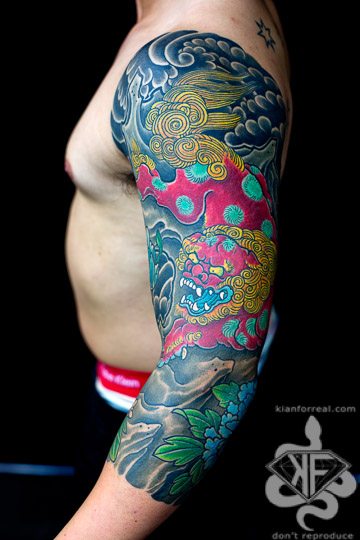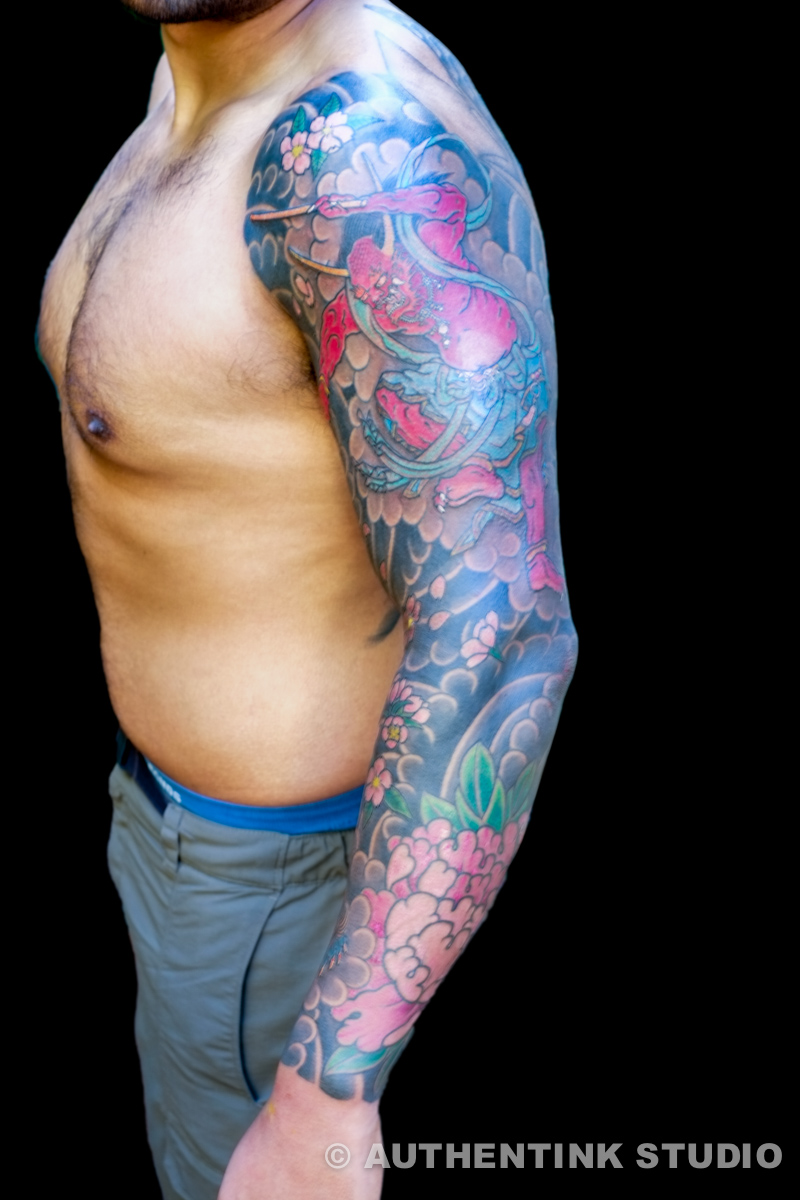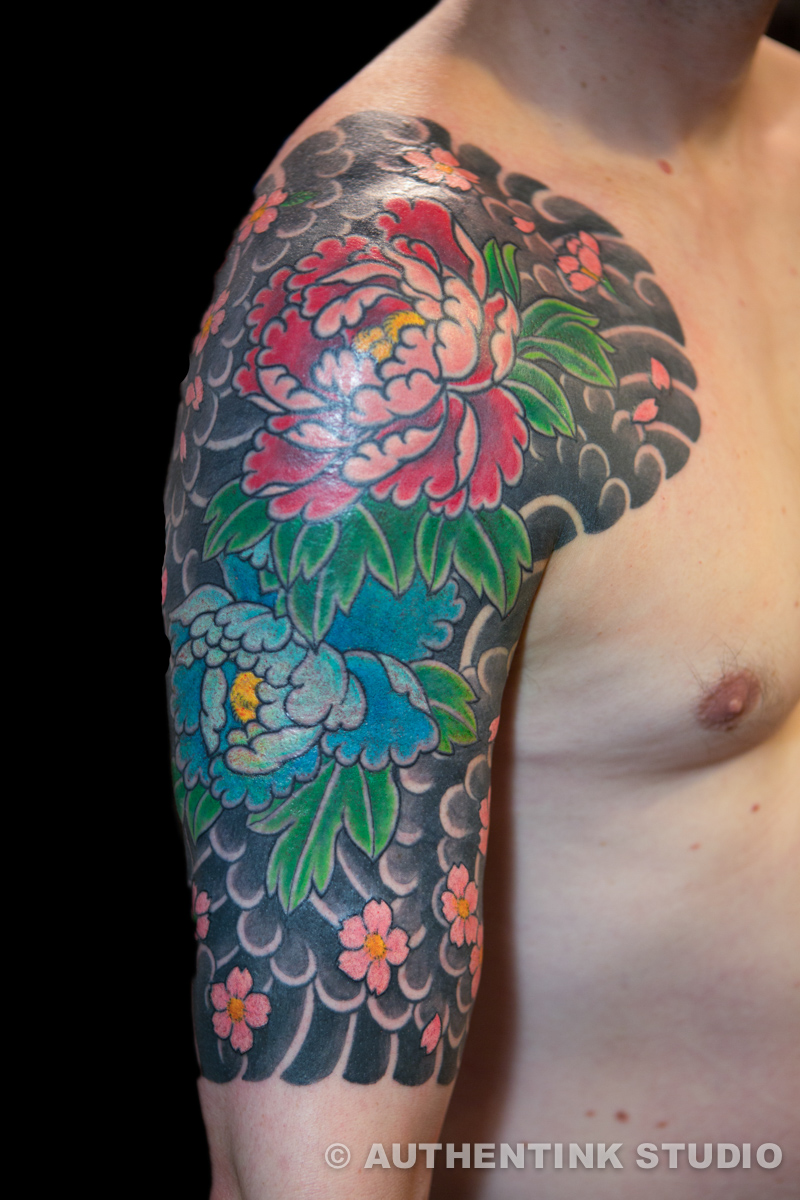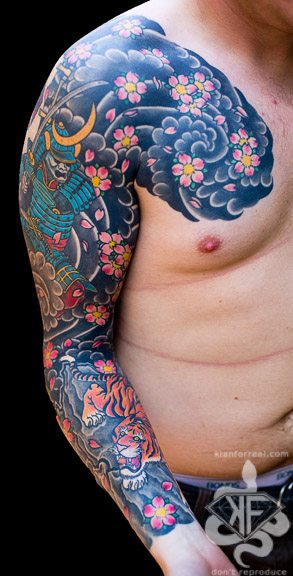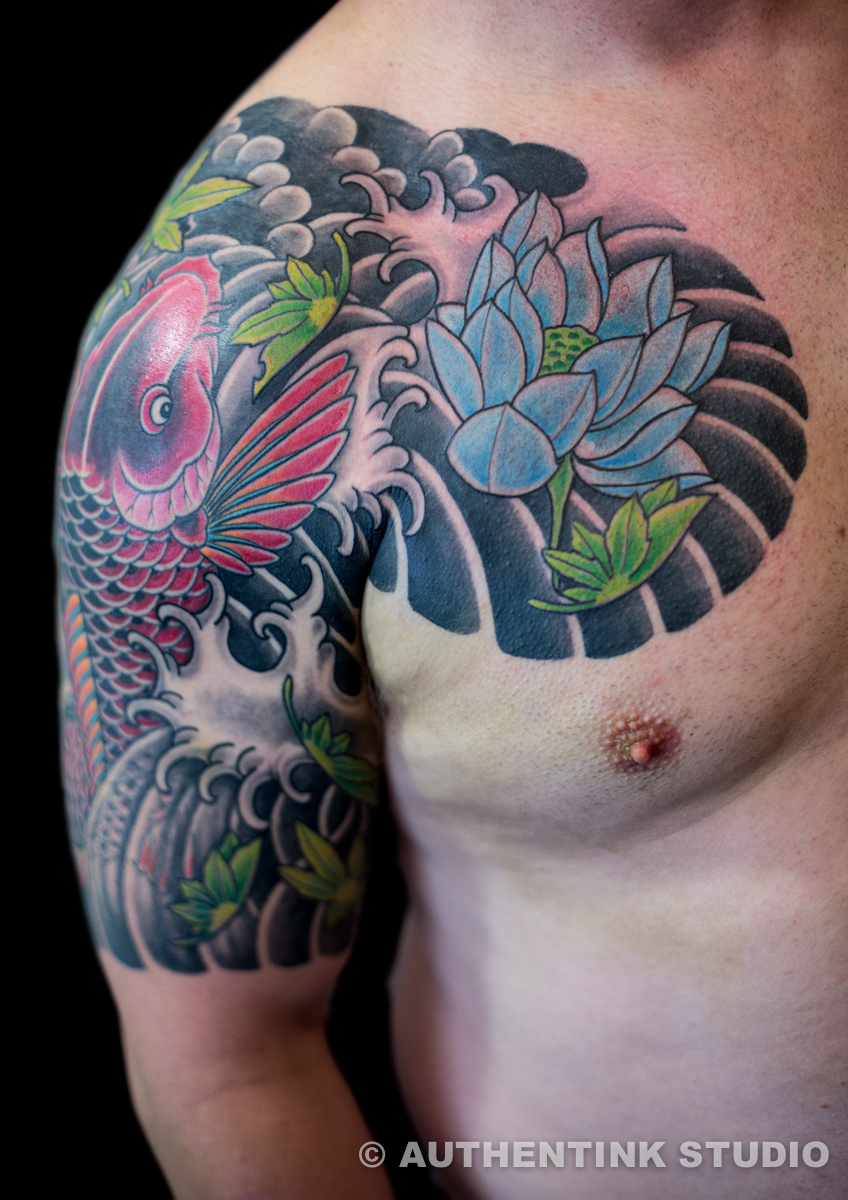
Authentink Tattoo Studio is the world renowned traditional Japanese Horimono (irezumi, wabori, Japanese tattoo) specialist studio based in Sydney, Australia, famous for the many unique styles of traditional Japanese tattooing that are being created in the studio. We have 4 artists that create their own unique style of Japanese Tattooing and whom are wholly dedicated to creating authentic Japanese style irezumi, both wabori (machine) and tebori (hand poke) and practice this style of the craft every day the studio is open.
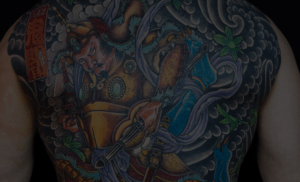


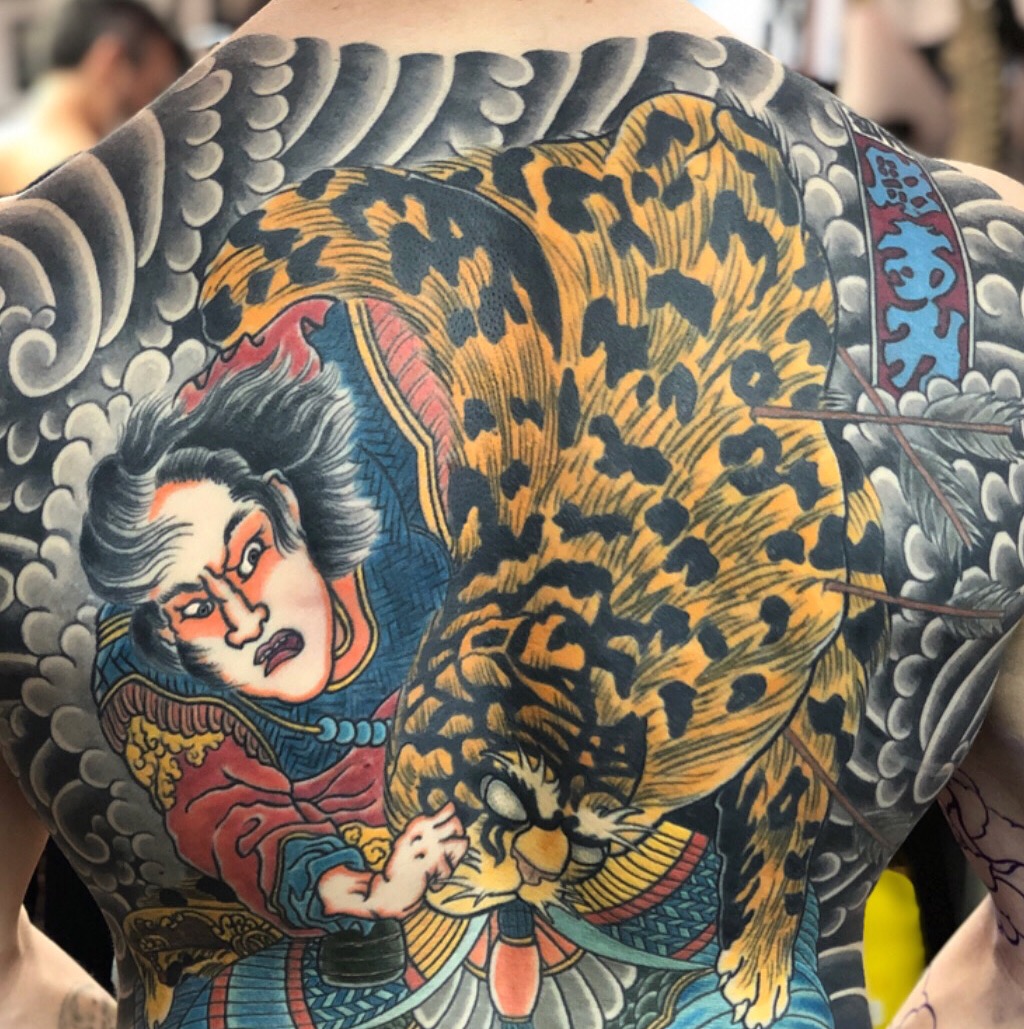
Stories about the 108’s Hero of the Suikoden (AKA, The Water Margin, Outlaws of the Marsh, Tale of the Marshes, All Men Are Brothers, Men of the Marshes, or The Marshes of Mount Liang). These stories were first illustrated by Japanese Artist Hokusai and then later were made into colour woodblock prints by Kuniyoshi. These prints are what most Traditional Japanese Tattoos are based on.
• Certain Buddhist gods, deities and demons
• Mythical and non-mythical creatures like the Phoenix, Kirin, dragons, tigers, koi carp, Fu dogs, snakes, Baku etc.
• Chinese/Japanese Zodiac (Astrology)
• Auspicious symbols
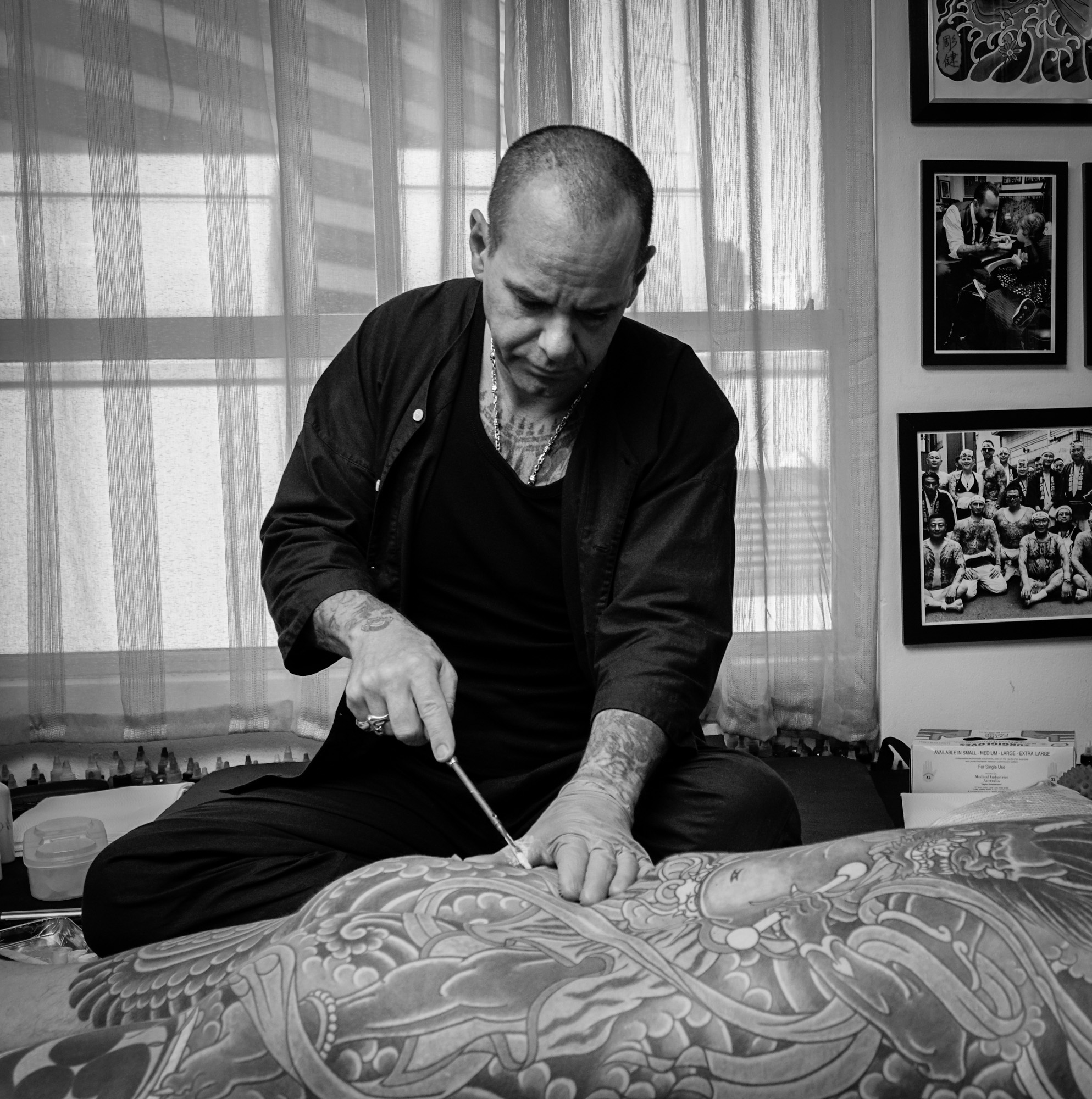
Horisumi has been practicing the craft of tebori for years and now works exclusively in this style, he still makes his outlines by machine as do many tebori artists. All colour and shading is done by tebori and of course anyone already being tattooed by him with machine can get their colour by tebori and the benefits that entails; richer colour, faster healing, less pain and more benefits along with joining a rich tradition of hand made tattoos.
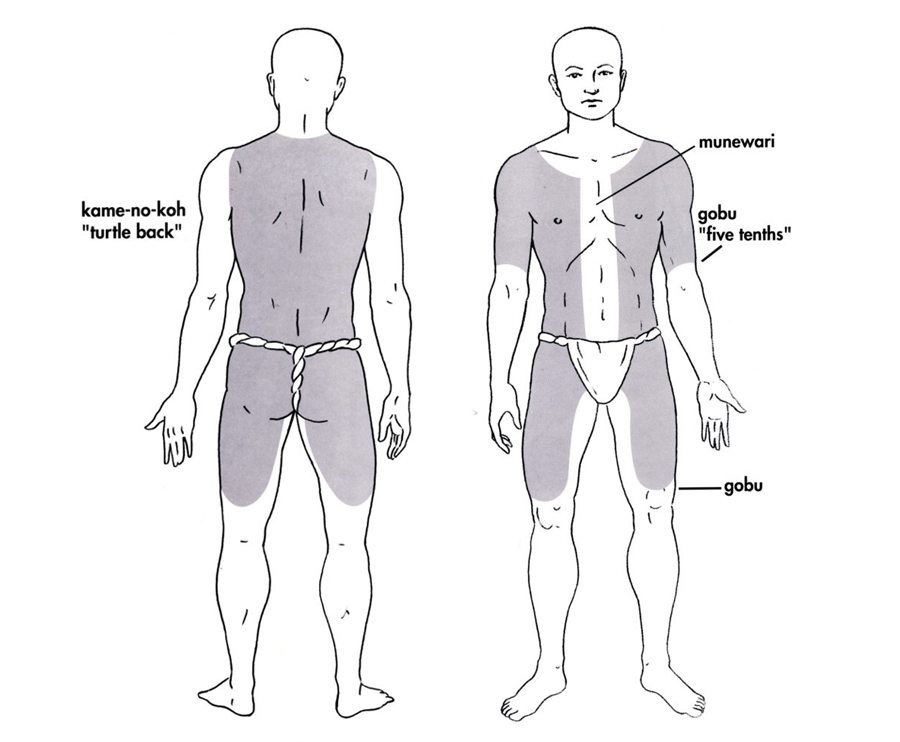
The central part of a Japanese bodysuit is the backpiece with full background or (nukibori/kame-no-koh) which occupies the whole backside from neck till about 20-30 centimetres below the crease of the buttocks. This is the biggest area of the body that can be tattooed and viewed at one glimpse. The rest of the tattoos support the story you want to tell with the backpiece. The subject matter is enhanced by a background consisting of the traditional elements such as spiral clouds, clouds, rocks, water, fire, waves and wind bars.
Potentially you can add secondary elements to this to specify seasons or atmosphere, like cherry blossoms, peony, chrysanthemum or maple leaves, which then become a recurring element throughout the bodysuit. You can start and interrupt a Japanese bodysuit in several ways. It is important to note that there are different ways to tattoo a man or a women. For example you start with the backpiece, generally speaking for a man you would create a backpiece with a background (nukibori), which makes it more powerful and pronounced. For a woman, and this is generally speaking, we don’t always use the background right away so as to make it more feminine in the beginning (gakubori), once sleeves are added or more body work is desired, then a background can be added to tie it altogether. However a woman may certainly elect to have a background added from the beginning if she desires the strong look of a determined female.
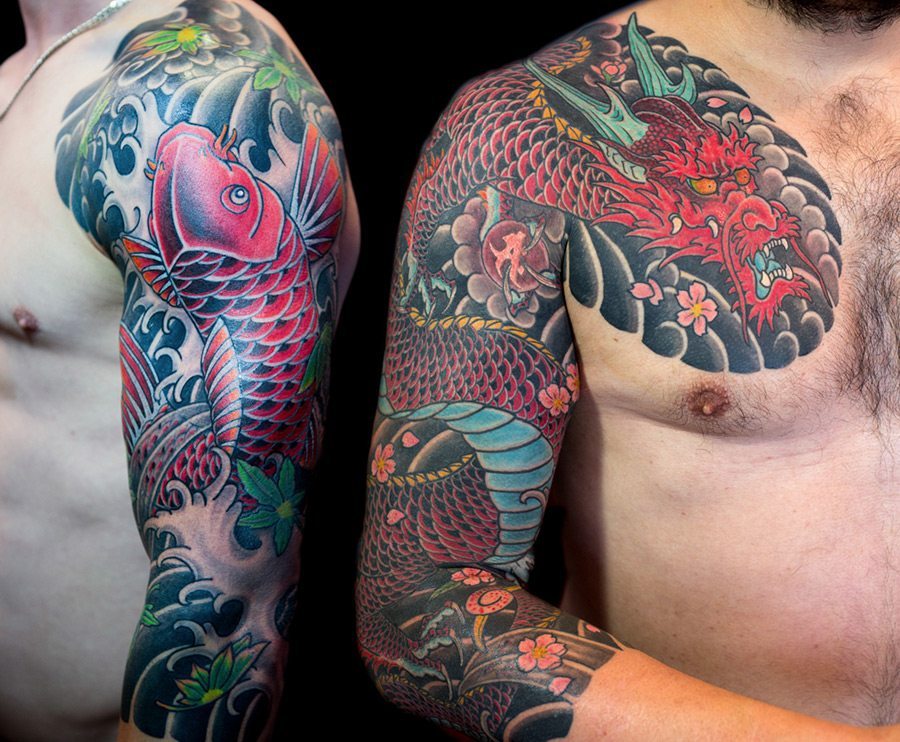
Next step are arms and chest tattoos. For males the chest plate or ‘hikae’ covers most of the pectoral area, 2-4 centimeters from the middle of the chest to 2cm above the nipple and following along the collarbone up top. A strong chest plate really makes a sleeve look great! For a woman just a little more shoulder in the front going to the chest but not all the way on to the chest muscle, this creates a nice feminine look while staying true to tradition and finishing off the sleeve properly.
Arms can be full sleeve (nagasode), 3/4 (shichibu) or half-sleeve (gobu) for men and be within tradition and also create a strong powerful Japanese Tattoo look. Everyone will have their own opinion and work requirements may dictate otherwise but I believe and traditional Japanese tattoo would favor that for females it should always be a 3/4 sleeve, this gives it a distinguished feminine look, not too hard and not too serious. A ½ sleeve on a woman may look too strong for some women and a full sleeve may be too much unless there is other serious body work present to accentuate the full sleeves.
Themes from left and right are sub-divided into feminine themes on the left and male themes on the right. An example is a dragon with an open mouth on the right, a dragon mouth closed on the left. Another example could be a koi swimming up on the right, a koi swimming down on the left. The elements and the background of the arms are consistent with those on the back. Subject matter on the front correspond with the story of the backpiece. Although this sequence is interchangeable which means you can start arm/chest then the other arm/chest followed with a backpiece.
